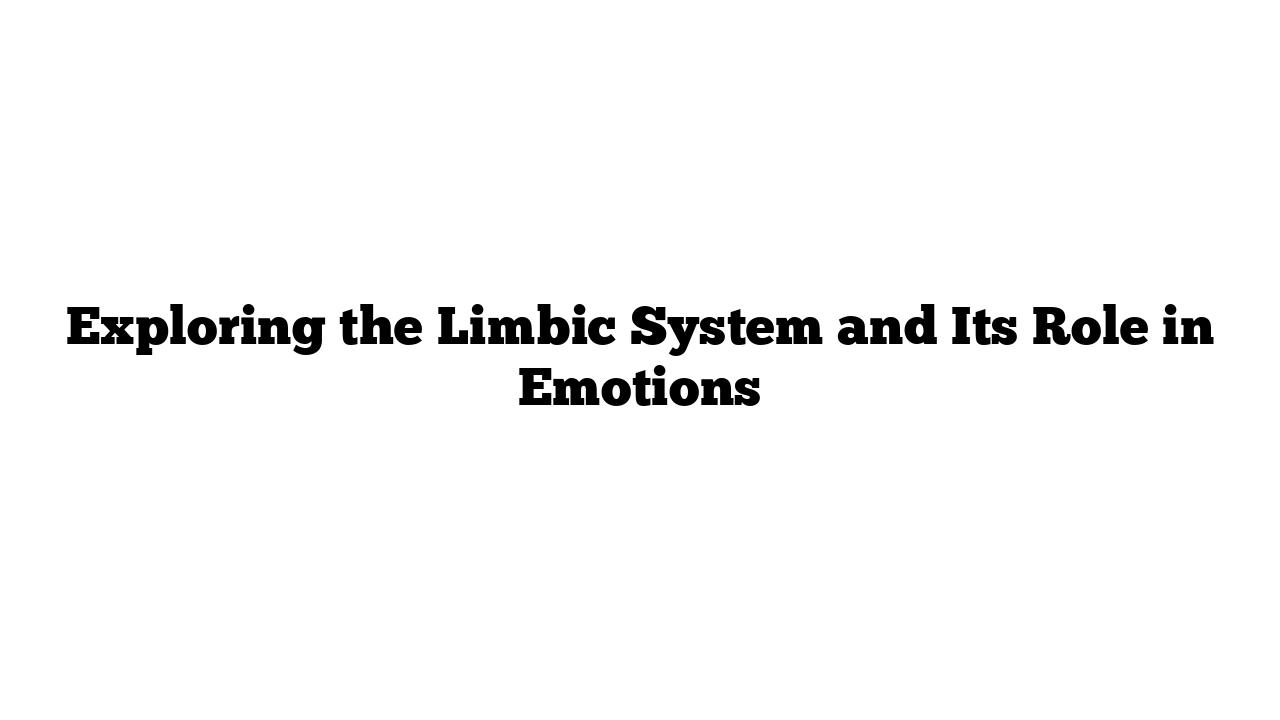Introduction: What Is the Limbic System?
The limbic system is a fascinating set of brain structures that plays a central role in regulating emotions and processing the environment around us. It’s like the emotional center of our brain, impacting how we feel, react, and even remember events. While experts don’t always agree on the exact components, most agree on four key structures related to emotions: the hypothalamus, amygdala, thalamus, and hippocampus.
Key Components of the Limbic System
Let’s break down these structures, using an easy way to remember them. Imagine a cartoon hippopotamus wearing a hat. Here, “HAT” stands for Hypothalamus, Amygdala, and Thalamus, and “hippo” is short for hippocampus.
1. Thalamus: The Sensory Relay Station
The thalamus acts like a sensory relay station. Almost everything we experience—sights, sounds, tastes, and touches—travels through the thalamus before reaching other brain areas for processing. However, smell is unique; it bypasses the thalamus and goes directly to areas near those related to emotion. This may explain why certain scents evoke powerful memories and emotions.
Did you know? Emotions often tie into sensory input, which is why a beautiful view or a piece of music can instantly change your mood.
2. Amygdala: The Aggression Center
The amygdala is often called the brain’s aggression center. When stimulated, it can evoke strong emotions like anger, fear, and anxiety. Studies show that if the amygdala is damaged or removed, a person can become unusually mellow. Psychologists Dr. Kluver and Dr. Bucy studied this effect, leading to the term Kluver-Bucy syndrome, where bilateral (both sides) amygdala damage causes behaviors like hyperorality (putting things in the mouth), hypersexuality, and disinhibited behavior (acting impulsively without considering consequences) [source].
“A stimulated amygdala can lead to strong feelings, while a damaged one results in an overly calm demeanor.”
3. Hippocampus: The Memory Center
The hippocampus plays a crucial role in memory formation. It helps convert short-term memories into long-term memories. This function is vital because our memories often trigger emotions. People with hippocampal damage struggle to form new memories, though they retain memories from before the damage.
Interestingly, if the hippocampus is impaired, a person can still recall old memories but has trouble making new ones. For example, someone might remember their high school days but forget recent events.
4. Hypothalamus: The Regulatory Center
The hypothalamus is a tiny structure but plays a huge role in controlling body functions, especially in emotional responses. Located below the thalamus, it regulates the autonomic nervous system (ANS), which governs our fight-or-flight (stress response) and rest-and-digest (relaxation) reactions. It does this by triggering hormone release, including adrenaline and norepinephrine, which prepare the body for action in moments of stress or excitement.
Additionally, the hypothalamus helps manage basic drives like hunger, thirst, and sleep, all of which can affect emotional states.
Limbic System in Action: Why Understanding It Matters
The limbic system is essential to our emotional health. Whether it’s fear, happiness, anger, or sadness, our reactions and memories are closely tied to these structures. By understanding the limbic system, we gain insight into how we process emotions and why certain memories, especially those tied to strong emotions, stay with us vividly.
To learn more about the brain’s impact on emotions and memory, visit medicaltimes.io.
